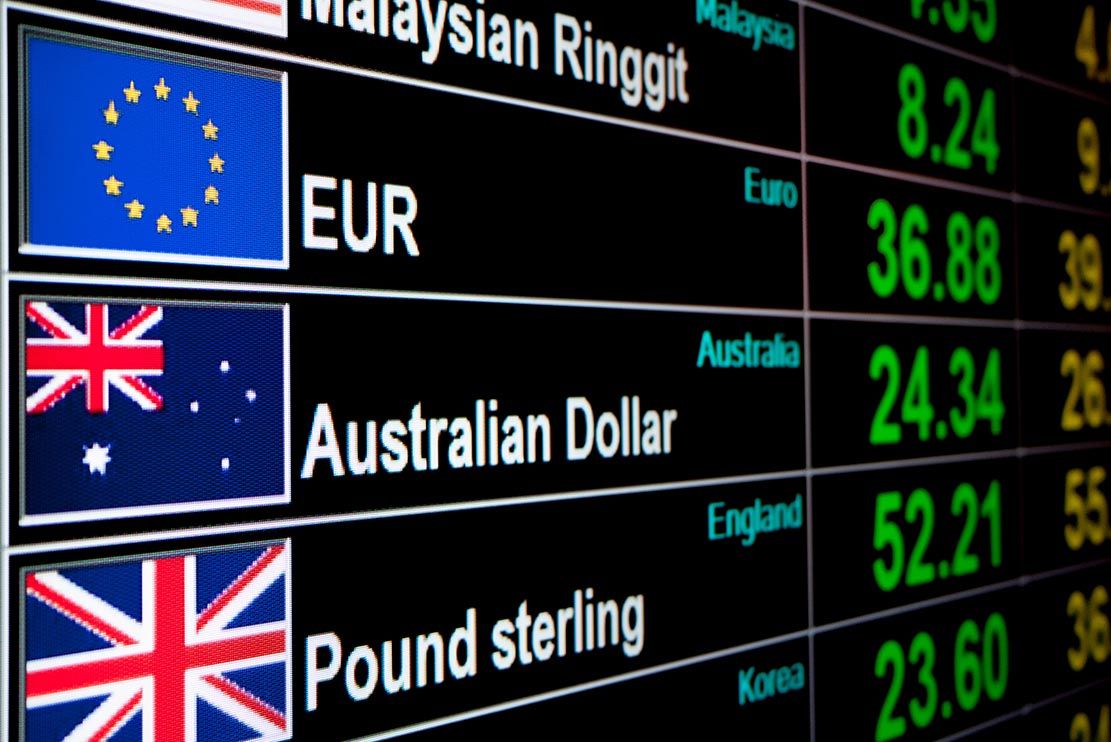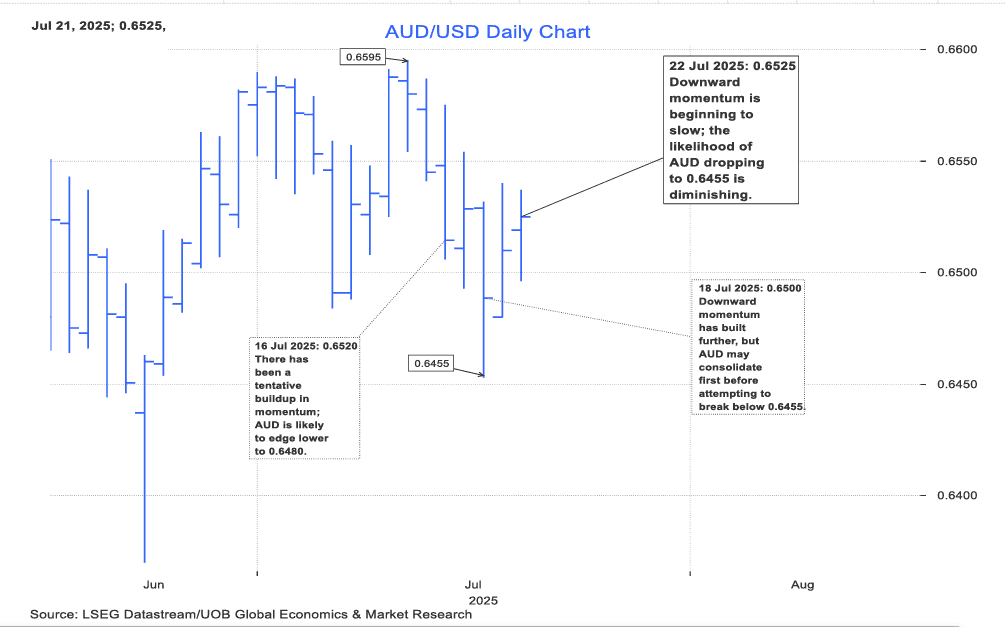
Image © Adobe Stock
AUD to benefit from supportive technicals and shallow RBA cutting cycle.
The Australian Dollar is trading in its trademark choppy fashion, but is ultimately poised to extend gains, according to strategists we follow.
Having experienced a run of weakness against the Dollar, Euro and British Pound over recent days, the Australian Dollar's outlook could be at risk of deteriorating.
However, the assessment some FX market specialists are reaching is that the currency is merely experiencing a counter-trend pullback.
"AUD/USD price action maintaining its choppy characteristics," says Nick Kennedy, an analyst at Lloyds Bank. "The dip last week was the latest frustration, but that hasn't altered the overall uptrend pattern."
The Australian Dollar rose to the cusp of $0.66 in early July, before retreating in the face of a broader U.S. Dollar rebound.
That retreat coincides with a rise in the Pound, with GBP/AUD recovering back to 2.0757 from a mid-month low of 2.0442.
If AUD/USD can reinvigorate its uptrend against the U.S. Dollar, cross pairs like GBP/AUD would likely come back under pressure, which is what our latest Week Ahead Forecast looks for.
"The underlying tone has firmed," says Quek Ser Leang, Senior Technical Strategist at UOB. "Downward momentum is beginning to slow, and the likelihood of AUD dropping to 0.6455 is diminishing."
From here, Leang looks for a breach of "strong resistance" at 0.6560.

Image courtesy of UOB.
"The 0.6590 high is still the immediate objective," says Kennedy. "Once throught here, attention would turn towards 0.6677/82. It remains a buy dips market as we work towards those resistance lines."
AUD is nevertheless showing some signs of weakness in the early stages of the week, in part due to the Reserve Bank of Australia's latest guidance that suggests further interest rate cuts lie ahead.
The minutes to the RBA's July meeting were released Tuesday, showing policy makers acknowledge Australia is in an easing cycle and the base case is still for a cautious and gradual easing cycle.
That being said, the RBA's board does not think it is a long way from neutral, which implies Australia has less leeway to cut than other countries.
This is important from a foreign exchange perspective given a shallower path of rate cuts will likely bolster the investment case for AUD fixed income assets, benefiting the domestic currency in the process.
This is particularly the case against currencies belonging to central banks where there is scope for deeper cuts in the coming months, such as the Pound and the Dollar.
"Further cuts could add additional downside pressure to AUD/USD, but we continue to think that the broader risk backdrop and moves in USD will be more important for the cross. Given our baseline that Fed cuts are likely to begin in September, policy easing should provide some modest relief to AUD over the medium-term, even if the tactical backdrop remains challenging," says a note from Goldman Sachs.
